In-depth review: Apple's iPhone 6s & 6s Plus with 3D Touch
iPhone 6s
4.5 / 5Last year's iPhone 6 and 6 Plus introduced a larger, slimmer form factor housing higher resolution Retina HD screens and improvements in processors, cameras and wireless. While Apple's latest 6s and 6s Plus models look virtually identical, the company has significantly improved nearly every key feature, from a stronger glass and metal exterior outside to high-performance components inside, including a new pressure sensitive 3D Touch display.
iPhone 6s models deliver five major categories of enhancements over Apple's bestselling iPhone 6 (which was already both the world's top selling iPhone and top selling smartphone): a new 3D Touch digitizer, paired with a Taptic Engine actuator, enables a new level of pressure sensitive, multitouch interaction backed with intuitive haptic feedback; a vastly improved A9 Application Processor providing enhanced speed and battery efficiency, paired with 2GB of RAM and a variety of integrated engine enhancements; new iSight and FaceTime cameras for sharper photos and 4K videos; enhanced wireless that supports faster, feature-enhanced LTE Advanced mobile and MIMO WiFi; and a stronger, more liquid resistant glass and aluminum body that makes 6s models more rigid and durable, without being significantly larger or heavier.
The two new 6s/6s Plus models continue to sell alongside last year's 6/6 Plus, which are now $100 less (starting at $550), as well as the A7-powered iPhone 5s, which is now $450 or "free on contract." The clear differentiation between the smaller 5s and middle tier 6 models has eliminated a role for iPhone 5c, which is no longer being sold by Apple.
In addition to their new features, iPhone 6s and 6s Plus also stand apart as the only models offering 128GB capacities (iPhone 6 is available only in 16 and 64GB versions, while iPhone 5s maxes out at 32GB), and are Apple's only handsets currently offered in yellow or rose gold.
What's new #1: 3D Touch Retina HD Display with Taptic Engine
After giving its eighth generation iPhone 6 a larger, higher resolution Retina HD Display last year, Apple has now turned its attention toward enhancing the usability of multitouch rather than simply bumping up pixel count and screen size, as most competitors have been doing at regular intervals (between tacking on forgettable gimmicks as 3D visuals and curved screens).
Apple's implementation of 3D Touch is more than just screen pressure sensitivity and some user interface extensions. It is particularly well conceived in that it delivers real benefits in speeding up navigation and adding dimension to multitouch gestures while also being unobtrusive by way of its intuitive feel.
Anyone who doesn't like it can turn if off or tone it down, but in our experience, 3D Touch is both usefully appealing and fun to use. The feature is reminiscent of Force Touch, which debuted on Apple Watch last fall; it similarly borrows the extremely precise Taptic Engine to deliver vibratory feedback that's so expertly timed that "vibration" just seems too sloppy of a word to describe it.
3D Touch on the new 6s models enables launching deep-linked features within apps (called Quick Actions, depicted above), quickly perusing or opening documents or other content such as emails (referred to as Peek and Pop, depicted below) and adding a layer of depth in apps ranging from Notes' pressure sensitive doodles to video games that can sense the difference between a tapped touch and a harder press.
Like the original Multitouch screen on Apple's first iPhone from 2007, 3D Touch is designed to feel so natural and intuitive that it doesn't impose a learning curve. It's effortlessly easy to pick up begin using, and it doesn't string you along a gimmicky path toward failure (like Samsung's hand waving navigation or Google's face unlock or Amazon's face tilting parallax).
If you try 3D Touch on a UI element that doesn't yet offer support, iPhone gives a brief haptic cue in acknowledgement. There are areas (particularly among third party apps) where 3D Touch doesn't do anything yet. But even among Apple's own titles, there are lots of opportunities for Quick Actions and Peek and Pop style interaction that currently don't do anything. That is likely to change quickly, as a variety of developers, including Twitter and Instagram, have already jumped to add Quick Actions to their apps.
One drawback to 3D Touch: the new layer of digitizer sophistication adds weight and size to the phone. Fortunately it's quite a slight difference. If you directly compare a 6 Plus and 6s Plus, you might notice a subtle change in weight (0.7 ounces or 20 grams). The smaller iPhone 6s has even less of a weight gain (less than half and once, or about 12 grams). Both phones are also 0.2mm thicker than last year, a difference of 1/100th of an inch.
Standard iPhone 6 cases continue to fit, and without doing a direct comparison it is hard to notice any real difference in weight or size. It appears Apple worked hard to make the addition of 3D Touch as invisible as possible, despite being one of the marquee features of the new iPhone 6s.
What hasn't changed with the display
While a lot of work has gone into making 3D Touch smart, useful and unobtrusively inconspicuous, nothing has changed in the pixel count or screen sizes of the two new 6s iPhone models.
The Retina HD display of the 4.7-inch iPhone 6 retains a 1,334-by-750 or "1 megapixel" resolution (a quarter million more pixels than iPhone 5's 727,040, at the same 326ppi pixel density), while the Retina HD display of the 5.5-inch iPhone 6 Plus retains a 1,920-by-1,080 or "2 megapixel" resolution (at the same 401ppi pixel density).
This is noteworthy because most of Apple's competition was pushing larger and higher resolution screens even before iPhone 6 shipped. Over the past year rival phones have appeared with near-tablet resolutions like Samsung's Note 4, which squeezed 2,560-by-1,440 pixels on a 5.7 inch screen. Google just endorsed that same uber-phablet format with its latest Huawei-manufactured Nexus 6P.
The problem with expanding screen size is obvious: it makes the phone increasingly ridiculous to carry and use. On the other hand, adding more pixels (whether on a larger screen, or simply contributing toward pixel density) seems like an incremental no-brainer feature, because sharper displays are always nice. However, there actually is a major downside to the high pixel counts of devices like the Note line and Google's new Nexus 6P.
With nearly 3.7 megapixels, these displays demand far more graphics and CPU processing power to feel as responsive as an iPhone with nearly half or almost a quarter of the pixels. Last year, we noted that even iPhone 6 Plus took a significant performance hit compared to the similarly A8-powered iPhone 6, apparently due entirely to its extra million pixels.
Apple's A8 was already faster than the best chips Samsung and other Android licensees use. By continuing to ramp up pixel counts while relying on slower Application Processors, Android players are doubling down on their failing strategy of optimizing for specs rather than real world usability.
Over the last year of iPhone 6 sales, the outcome of these two different approaches makes it clear that an increasing small population of users are choosing to pay a premium for oversized, resolution-maxed Android models while mainstream users are looking beyond screen specs and instead picking for a phone with a high quality screen backed up by a sufficiently fast processor, which is also capable of running the best apps.
According to Google's Developer Dashboards, over 87 percent of Android's installed base is opting to use "Normal" screens (less than around 5 inches), rather than "Large" or "Xlarge" models, and only about 15 percent are using devices with an "xxhdpi" screen, which the company loosely defines as somewhere greater than about 250 dpi.
So while Google and its Android partners showboat their huge flagships, the reality is that most buyers are opting for cheap, low end Androids or high end iPhones (as the overwhelming majority of new iPhones sold each year are Apple's latest model).
Two years ago, there was increasing evidence that a relatively small but collectively significant number of buyers were demanding larger screens than Apple was offering in its 4 inch iPhone 5 family. Apple capitalized upon that interest with iPhone 6 and 6 Plus, which eviscerated Android's high end sales, particularly those of Samsung.
However, it currently does not appear there's much demand for ultra high resolutions or even larger screens than those Apple is now selling. That suggests that Apple is unlikely to radically change its displays next year. Instead, it appears Apple will continue to focus on its performance edge with increasingly fast silicon and more sophisticated software driving its Retina HD screens.
Until Apple can deliver a truly meaningful increase in the resolution quality of its display, its more likely that future iPhone screens will instead focus on other technologies, perhaps including embedded sensors or cameras, increased durability, or lighter weight, thinner components, in addition to improvements to color accuracy, polarizers and dual domain pixels we've already seen.
Incrementally improving the current format is also of benefit to Apple's iOS developers, who can then focus on their own software rather than optimizing for new fragmented categories of screen sizes and resolutions.
The general absence of changes in the size and UI features of iPhone 6s and 6s Plus also indicate that Apple is happy with its reception for the two models, and also indicates that it believes that demand for the smaller iPhone 5s can be met with a single model. There's no new bigger model but also new smaller iPhone either.
Despite some talk from people who said they liked the earlier 4-inch iPhone form factor, it appears that the 4.7 inch iPhone 6 is small enough, and that creating a new smaller phone in the future is probably unlikely. Mini phones were once trumpeted as "the next thing" in phones by Palm and later Samsung, but it now looks like tiny smartphones are hit with too many tradeoffs to be very appealing.
Issues with last year's iPhone 6 Plus
On the other hand, iPhone 6s Plus is still a big iPhone. Reachability (a double tap on the Home button that slides the top of the screen down temporarily) may help offset that extra size for some, but it feels a bit clumsy to use regularly. In fact, after extensive use of iPhone 6 Plus over the last several months, it still feels huge.
However, the only reason for picking it is indeed compelling: it has a much larger screen that's easier to read, with optionally larger targets (via Display Zoom). While too big for many, the size is just right for a lot of people. It seems very unlikely that Apple will ever shrink its phone models down, the way it canceled the 17-inch PowerBook. I personally hate the size of the 6 Plus, but I can't stop using it because I love the big screen.
However, iPhone 6 Plus has, as mentioned above, a performance lag compared to its smaller iPhone 6 sibling. That's made it feel, in my opinion, less like an iPhone and more like a big Android beast. And like many Android phablet users, I'd been putting up with the less than appealing experience because of its additional screen size.
While iPhone 6 never felt like a slow phone, the 6 Plus exhibits occasional display lags I've never seen on an iPhone before. Additionally, it seems more likely to dump what you're doing out of system memory, thanks to the aggressive way iOS manages RAM shortages.
For example, if you're posting a photo on Instagram and switch to Maps, when you return to Instagram your photo being posted is more likely than not going to be gone and you'll have to start over. Similar issues happen when switching between Safari and Maps, where both the map and every web page has to reload nearly every time you switch.
This is less of an issue when you have a fast network connection. However, when you're roaming internationally or otherwise have limited data access, having your maps and web pages reload every time you open the app ranges from annoying to disastrous, in situations where you've lost data access entirely.
The root cause for this performance issue isn't just the CPU straining under an extra million pixels. It's also the limited RAM Apple installed. While iOS is much more memory efficient than other mobile platforms, Apple has also limited the amount of RAM installed in an effort to boost power efficiency. For iPhone 6 Plus, this tradeoff seemed too severe. Thankfully, the new iPhone 6s Plus addresses both performance issues.
What's new, #2: A9, 2GB RAM
As Apple's first foray into large screen smartphones, the original iPhone 6 Plus wasn't exactly a legendarily bad "1.0" device that pundits love to direly warn users never to even consider buying. Customer satisfaction ratings for the 6 Plus were remarkably high, even by Apple's standards. That doesn't mean it can't be improved upon.
This year, rather than adding even more pixels, Apple gave both the 6s Plus and its smaller 6s sibling a big boost in processor power, thanks to the new A9 Application Processor. Apple claims a 70 percent increase in CPU speed (almost three times the 25 percent increase of last year's A8 over the A7) and a 90 percent increase in GPU power (almost twice the A8's 50 percent improvement) for its third generation of 64-bit iOS silicon.
In our initial testing, we saw a 57 percent improvement in single core Geekbench CPU scores over last year's iPhone 6 Plus overall, and more than a 59 percent increase in memory test scores.
While last year's A8 contributed a smaller boost in CPU and GPU, it was also given more work, particularly on the 6 Plus where it had those extra million pixels to move. On the new 6s and 6s Plus, Apple has its new, much faster (and industry leading) A9 chip powering the same resolution display.
That's the opposite direction of most of Apple's competitors, which are now just rolling out their first generation of 64-bit chips (employing basic ARM designs) in their higher end phones, but tasking those weaker chips with the highest screen resolutions they can source.
That makes it easy to understand why the latest iPhone 6s models dramatically widen their GPU performance lead over Samsung's current flagships, whether sporting Snapdragon chips from Qualcomm or Samsung's own Exynos designs.
Specialized benchmarks run by AnandTech show iPhone 6s models pulling far ahead of other smartphones and even tablets in tests ranging from browser scores (Kraken, WebXPRT and Google Octane) to graphics (3DMark and GFXBench), with particular mention of the devices' new NAND storage controller.
"Apple has effectively taken their Macbook SSD controller and adapted it for use in a smartphone," the site reported, detailing that in sequential reads, iPhone 6s Plus is 58 percent faster than last year's 6 Plus and over 92 percent faster than Samsung's latest Galaxy S6 Edge. In sequential writes, the 6s Plus is 90 percent faster than the previous model and 298 percent faster than Samsung's flagship.
"Apple has integrated a mobile storage solution that I haven't seen in any other device yet, and the results suggest that they're ahead of just about every other OEM in the industry here by a significant amount," wrote Joshua Ho.
Thanks for the memories
One area where Apple looks to be catching up to competitors is in bundled RAM. Apple installed 2GB of RAM on iPad Air 2, but last year's iPhone 6 models still got only 1GB of system memory. Because iOS aggressively manages memory use, installing less RAM likely offered more benefit in terms of energy efficiency (and therefore battery life) than extra RAM would have. However, less RAM meant more reloading of data such as web pages in Safari.
A year later, the engineering tradeoff of less RAM for more battery life is now no longer necessary, due to the increased efficiency of the new A9 and software improvements made to iOS 9. The new iPhone 6s and 6s Plus not only sport a similar battery life, but do so with smaller batteries and twice the RAM, all while operating faster. That's pretty incredible technical progress on all fronts, and a testament to Apple's highly integrated design strategy.
Adding an extra GB of RAM makes a noticeable difference, particularly evident in Safari when multiple web pages are loaded at once. When you navigate back to previously loaded web pages, iPhone 6 models nearly always have to refresh every page. With more RAM available, iPhone 6s can take you back to a page, in most cases without reloading. That erases the frustrating delays in being shown a blank Safari page (or a blank Map, or reloading your app).
Adding 1GB is a huge jump, as iPhone apps and iOS have previously worked (since 2012's iPhone 5) entirely within 1GB. Rather than just twice the memory, the new jump means a much larger increase in available memory for apps and the system. And because both have been designed for years to be conservative in their memory use, the extra RAM is a big enhancement.
A few Android phones now include several GB of RAM, but much of that is wasted by the system, or by apps that routinely hog up many times the RAM of their iOS counterparts, particularly in gaming.
As noted by developer Glyn Williams, Google's architecture for Android relies on Java's garbage collection to free up unused memory. Java Garbage Collection, he notes, is designed to work best when you have 4 to 8 times more memory installed than you need. It becomes inefficient when RAM is actually constrained.
Android's garbage collection is a well-known problem. Last summer, AnandTech wrote "Android and Dalvik have traditionally suffered a lot from Dalvik's garbage collection (GC) mechanism."
Google is aiming to replace Android's troubled garbage collection memory management with the Android RunTime of Android 5.0 L. However, despite having already launched another new version of Android (Marshmallow), only 20 percent of Google's user base has even upgraded to last year's version, meaning at least 80 percent are still stuck with garbage collection and the lag and stutter it causes.
iOS doesn't use garbage collection. Instead, developers were originally trained to release their memory manually. Apple subsequently introduced ARC (Automatic Reference Counting), a technology that lets the system track and release memory allocations itself, without the overhead of Java-style garbage collection. ARC is now built into Swift, so developers get smart, automatic memory management for free.
Manual memory deallocation and ARC both allow iOS to perform well even when free memory is highly constrained. So rather than "catching up to Android" in installing more RAM, Apple has long been far ahead with more sophisticated software that performs better even when less RAM is available. With the same 2GB of many flagship Android models, iPhone 6s and 6s Plus now have much more memory available even as apps and the system continue to be more conservative and intelligent in how they use it.
M9, Hey Siri, Touch ID 2
Besides more RAM and a faster A9 CPU and GPU, the new iPhone 6s family also gets a variety of other enhancements, many of which are incorporated within the A9 itself.
That includes a new motion coprocessor engine Apple calls M9, which manages data from the accelerometer, compass, gyroscope and barometer separately from the CPU so that these can record data in the background without requiring CPU cores to remain awake using battery.
Apple also credits the M9 with handling always-on voice processing, so Siri can now be invoked by saying "Hey Siri," without needing to physically hold the Home button. Even when your phone display is off, "Hey Siri" will quickly bring up Siri and begin recording your request. Although it takes nearly three seconds to present the Siri listening interface, the phone appears to begin recording your voice with only about a second of delay.
"Hey Siri" seems to work at about an arm's length, even with my arm relaxed, straight at my waist line. It didn't seem to invoke with the phone inside a pocket. When setting up the phone new, there's now an extra (skippable) step that lets you configure "Hey Siri" by speaking a few commands. This configuration associates the feature with your own voice so others don't inadvertently trigger your phone with their requests.
A third engine on the A9 helps drive the improved, second generation Touch ID fingerprint sensor housed within the Home button. Touch ID now works virtually instantaneously, making it that much faster to unlock your phone, authenticate or invoke Apple Pay.
What's new #3: iSight & FaceTime Cameras
Another significant engine built into the A9 is Apple's Image Signal Processor, which curiously doesn't get any brand name or designation such as "ISP9." It is, however, one of the most important aspects of the phones' new camera architecture, because a great deal of the improvements and capabilities of the front facing FaceTime and rear iSight cameras are handled by this silicon.
This offers another example of Apple's tight integration between hardware and software, as the A9's ISP is handing lots of very sophisticated hardware-accelerated processing of the digital image data flowing from the camera sensors, including what the company describes as "better temporal and spatial noise reduction as well as third-generation local tone mapping," for smoother, less pixelated images.
Along with an enhanced ISP, the 6s family gets a new 12MP iSight sensor and 5MP FaceTime HD camera. Last year, Apple didn't change its 8MP iSight or 1.2MP FaceTime camera between the 5s and 6 models. Apple has emphasized that more important than just packing in "more MP," the new sensors employ "deep trench isolation" to prevent crosstalk between sensor pixels, resulting in less noise and more accurate color despite the addition of millions of extra pixels into a small, mobile camera sensor.
With the extra pixels, iPhone 6s can now capture 4K video at 30fps (in addition to 60fps or 30fps 1080p video). You have to manually select which mode you want from Settings/Photos & Camera, as there are pros and cons to each mode.
High frame rate (60fps) video isn't turned on by default because it has a hyper-realistic look to it compared to more familiar 30fps television-like video or the very cinematic feel of 24fps film. On the other hand, 4K video at 30fps is noticeably sharper in crisp detail, but quickly moving subjects often have a jittery look to them. The new 4K video mode looks best when avoiding rapid panning of the camera.
Despite boasting four times the pixels, 4K video only takes up about twice as much space as iPhone 6's 1080p HD video, in part because of its lower frame rate.
Unfortunately, it's difficult to share 4K (or even 1080p) videos at full quality. Sharing via sites like Facebook or Youtube greatly blur most of the image details away with aggressive image compression, and even sending videos from your phone via Messages or Mail to your Mac results in an automatic reduction to 720p video. It appears the only way to get full quality videos off the phone is using Apple's Photos app (or equivalent) via USB.
4K video shot on iPhone 6s also requires a pretty recent Mac to play back smoothly. My Macbook Air equipped with 1.8 GHz Intel Core i7 and Intel 3000 HD graphics struggled to open the video files at all.
Unlike its bigger 6s Plus sibling, the smaller iPhone 6s does not feature optical image stabilization, a hardware feature which further helps to isolate hand shake — particularly useful in low light capture — by compensating for device motion. The Plus-only system precisely moves the entire lens assembly based on motion data gathered by the onboard accelerometer and gyroscope. On iPhone 6s Plus, OIS is now activated when filming video, helping to further reduce distracting camera shake.
Beyond a higher resolution sensor, Apple also made significant improvements to the front-facing FaceTime camera, including the ability to use the screen as a Retina Flash for selfie shots taken in poor lighting conditions. Like iSight's TrueTone flash, Retina Flash illuminates scenes based on color measurements captured by the camera module, adding a slight tinge of warmth as needed.
Apple also added a new capture feature it calls Live Photos, which essentially captures a low frame rate video clip a second and a half before and after you snap the shutter. iPhone cameras have long captured a stream of image data when taking still photos— in order to be ready the moment you tap the shutter— but simply threw it away previously. Now, by default the video is saved along with the full quality photo.
The clever part is that Apple links the JPEG photo and the movie file so that it can present a moment of animation when swiping between photos. When activated with a 3D Touch, a Live Photo blurs slightly, then plays back the moment of context around the snapped shot. It's a cool idea, and adds emotional impact to your photos. It takes up a bit more space (about as much as two standard photos, so a lot less than a Burst), and requires no real effort to capture.
You should, however, remember to hold the camera focused on your subject for the extra second and a half of Live Photo capture, or your animated segment will (at least until iOS 9.1 arrives) depict the descent of your camera instead. A "LIVE" indicator is shown while the animated context continues to record, so you can tell when its finished and it's safe to lower the camera.
You can turn off Live Photo capture as easy as you turn on the flash, using its icon of concentric dotted circles in Camera. After you capture a Live Photo, if you don't like the animation you can turn it off per-photo by hitting Edit, deselecting the Live Photo icon and then hitting Save. This hides but doesn't delete the Live element, so you can reverse the edit afterward to see the Live Photo once again (as depicted below).
Live Photos currently play back only on iOS 9 or OS X El Capitan, but sharing sites including Instagram plan to support the feature (which is simple because its standards-based).
With all the photo technology Apple has shoehorned into its iPhones over the last nine years, it's amazing to see how far and how fast mobile photography has advanced. Lisa Bettany detailed a year by year model comparison of photos shot on every iPhone generation to detail that evolution.
However, perhaps the weakest link in iPhone photography is the use of tiny plastic lenses. Light refraction, lens flares and bright point artifacts continue to be a problem on the iPhone 6s, and won't go away until Apple decides to improve upon its lens, ideally including some sort of option for supporting external lens attachments for wide angle or other specialty lenses.
What's new #4: WiFi MIMO, LTE Advanced
Apple now supports up to 23 LTE bands on iPhone 6s, the most of any mobile phone. All models now support TDD bands used in China, as well as additional bands supporting smaller regional U.S. carriers, making the latest iPhones adept at traveling globally.
If your carrier supports LTE Advanced, the new 6s models can support insane mobile speeds of up to 300Mbps, twice the maximum that could be achieved with iPhone 6 (standard LTE service typically tops out around 40Mbps, with Wideband LTE offering as much as 150Mbps service, where available). Of course, this new technology only helps if your carrier supports it. In the U.S., AT&T has been deploying LTE Advanced networks in a series of cities, although without making any promises about actual throughput speeds.
WiFi is also greatly improved for iPhone 6s, enhancing last year's support for the 802.11ac (the latest standard used in Apple's tall form factor AirPort and Time Capsule base stations, newer Macs as well as a variety of third party WiFi base stations) with new multiple antenna MIMO technology that supports wireless speeds of up to 866MHz, twice the maximum of iPhone 6.
Taking advantage of these faster speeds does require an 802.11ac network. If you're connecting at Starbucks or using the same home router you bought several years ago, your WiFi speeds will be limited to 802.11n (150Mbps) or the older 802.11g (54Mpbs) or perhaps even slower.
What's new #5: Aluminum, liquid seals & Dual Ion Glass
While the new iPhone 6s and 6s Plus don't look very different externally, they do benefit from a series of material enhancements and construction technologies.
The first change involves 7000 Series Aluminum, a strong alloy Apple says is the best it has ever used in an iPhone. That's the same material the company used to craft Apple Watch Sport.
The strong material and revamped case design means the new phones are even more rigid despite being light, thin metal cases. One bend test video depicted a struggle to destroy the device in the hands of two YouTubers (below), confirming a large improvement over last year's iPhone 6 Plus, which itself wasn't particularly weak.
Along with the new material, Apple has also started adding rubber seals and gaskets (below) in the case itself and around connectors inside the device. While the company hasn't made any claims of liquid resistance, third parties have reported being able to dunk the new phones in clean water for several minutes, in some cases without any damage.
We certainly don't recommend anyone try that out, but it's an interesting development, particularly given the parallel work on Apple Watch to deliver a device with buttons, a mechanical crown and mic that can be used underwater.
This summer, I've regularly showered and gone swimming in lakes, chlorinated swimming pools and even salty sea water (that's not recommended) while wearing my my stainless steel Apple Watch, without any liquid damage.
It looks like within a year or two we could be just as casual about exposing our iPhones to water. Until then, today's iPhone 6s offers at least some extra protection against spills and moisture exposure.
That's a feature other vendors have been advertising for some time, although they've been quick to call their phones "water proof" despite a lot of cases where users have found that's not really the case. It looks like Apple is taking a more conservative approach to undersell and over deliver and it works out how to best protect everyday electronics from water damage.
Apple also says its new 6s and 6s Plus use a new cover glass created with a "special dual ion-exchange process," which makes it stronger and "the most durable in the smartphone industry." The new glass is an improvement over both last year's iPhone 6 (which in my experience hasn't suffered any scratches, despite a few drops) and the "Ion X" glass used in Apple Watch Sport models.
The development of a new hardened glass is particularly interesting given the high profile failure of Apple's partnership with a sapphire furnace maker last year. It's quite remarkable that the company could weather that crisis while at the same time lining up a replacement to stay ahead of the competition.
One year after delivering iPhone 6 models with all new everything, Apple is back with a 6s generation that's even more sophisticated, powerful and efficient, sporting advanced new materials and packing a variety of features that were once only available if you gave up your iOS apps and defected to the more basic world of Android, where nothing works quite as smoothly and software updates end before your mobile contract does.
That said, there are a few notable features still missing from Apple's latest flagship. If you want full weather proofing you'll need to do it yourself, although Apple is now taking steps in that direction. If you want a better camera with a fancy autofocus lens you'll need to carry one separately. But really, iPhone 6s and its 6s Plus sibling offer an exceptional package of upgrades that pulls out all the stops to woo both Android users and anyone who still has a 4-inch iPhone.
If you already have an iPhone 6, the extra speed, camera and wireless features aren't a super compelling upgrade, but carriers are increasingly offering great deals and upgrade incentives that make it easier to always have the latest phone technology in your pocket at a broadly affordable price.
Score: 4.5 out of 5
Pros:
- 3D Touch adds a cool new layer of interactivity, navigation and shortcuts
- Great battery life even when using LTE 4G
- A9 processor blows the pants off of the other SoCs
- Improved cameras deliver better photos, Live Photo novelty and crisp 4K video
- Price competitive with lessor alternatives
Cons:
- No optical zoom or external lens features
- No weather proofing options
Trade in your old iPhone for cash
If you're looking to upgrade to iPhone 6s or 6s Plus, you also check out AppleInsider's 2015 iPhone Trade-in Guide to see how much cash you can currently get for your current phone. In some cases, trading in your old phone can help cut the net cost of your new phone in half or more. Several top tier companies are currently paying up to $400 for last years iPhone models, in addition to hundreds for iPhone 5s models. Among them are Gazelle, NextWorth, BuyBack World, Amazon and others. Trade in prices and offers from these companies can be seen year round in AppleInsider's iPhone & iPad Trade-In Cash Payout Guide. If you haven't locked in a trade-in offer yet, consider doing so today, as cash payouts have slipped historically during the month of October:
Cases for your new iPhone 6s and 6s Plus
If you just bought or are about to take receipt of Apple's latest and greatest handset, make sure to peruse AppleInsider's roundup of the best protective iPhone 6s cases on sale now.
 Daniel Eran Dilger
Daniel Eran Dilger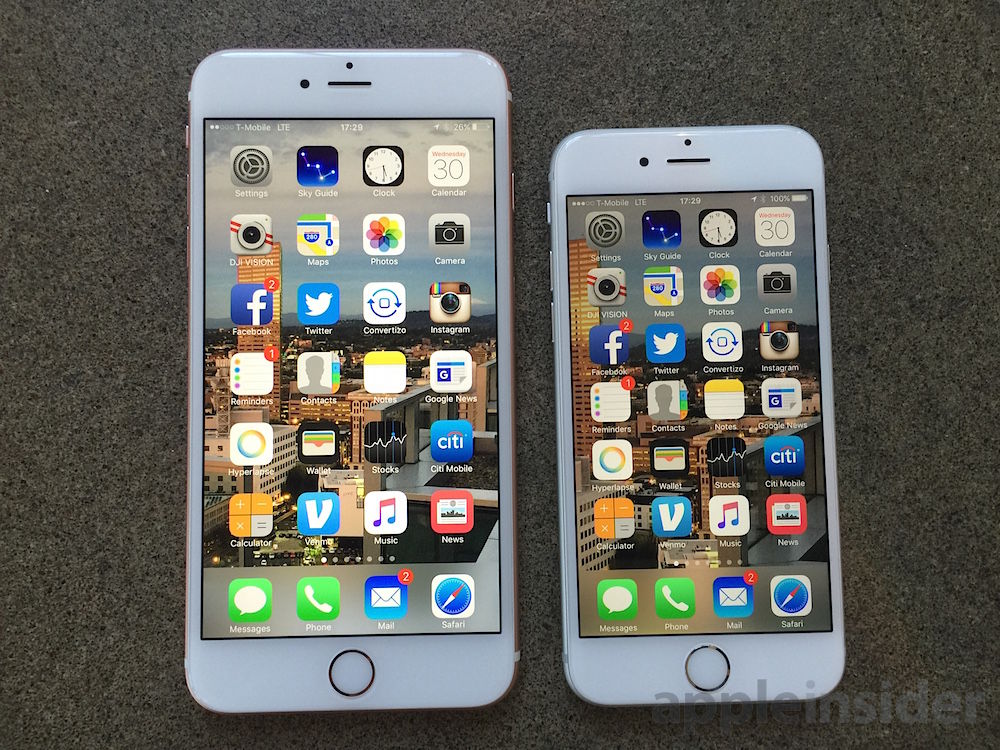
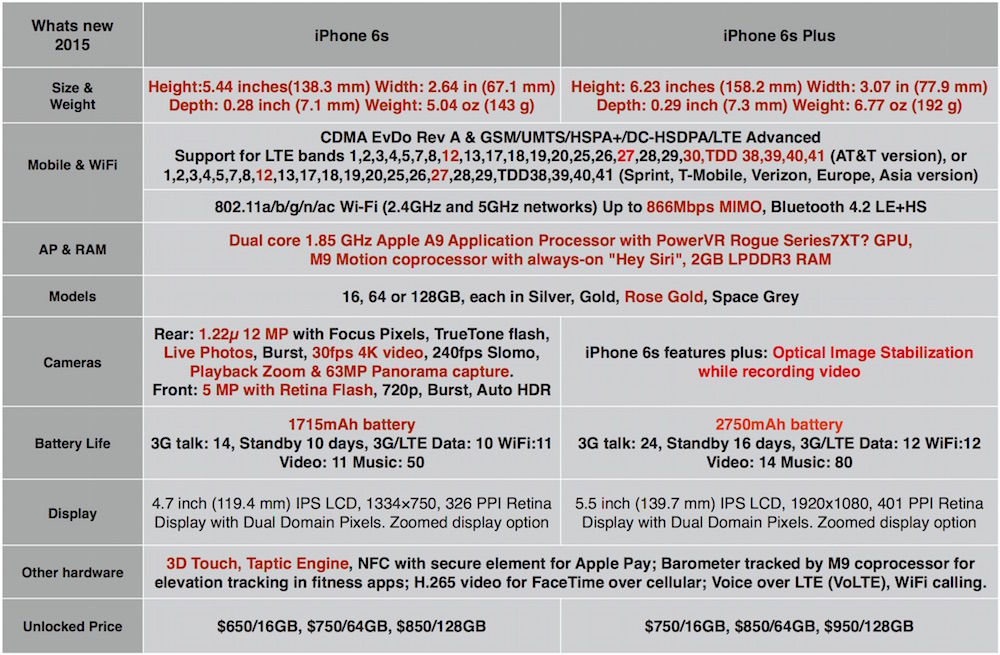
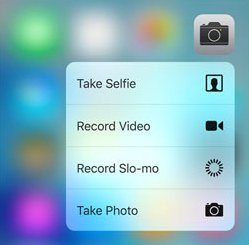
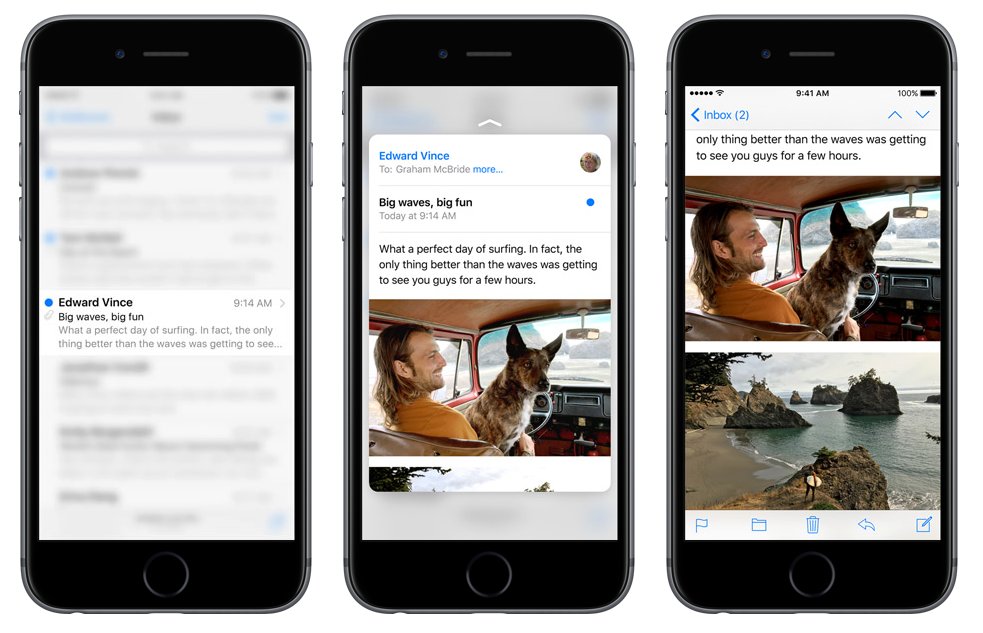
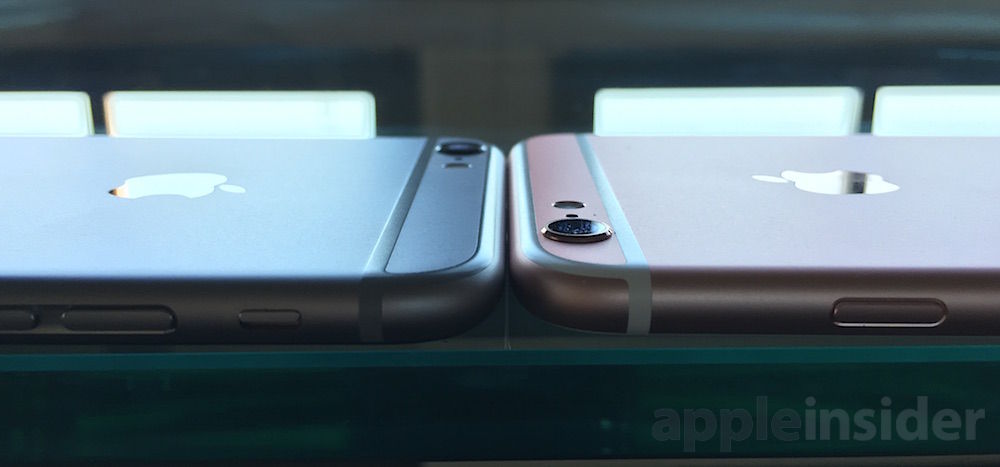
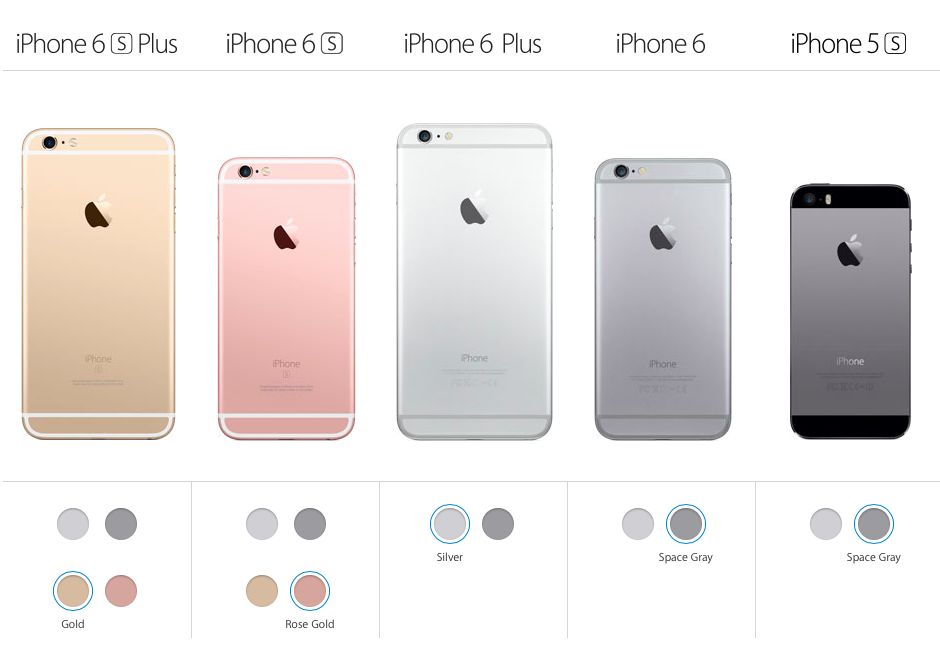
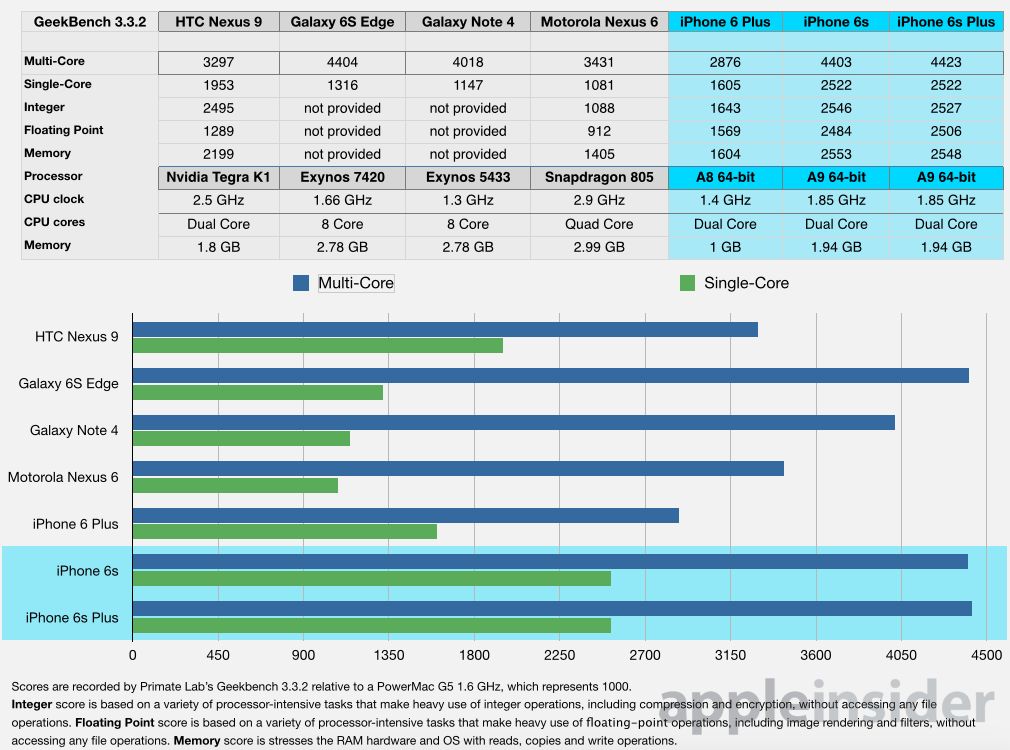
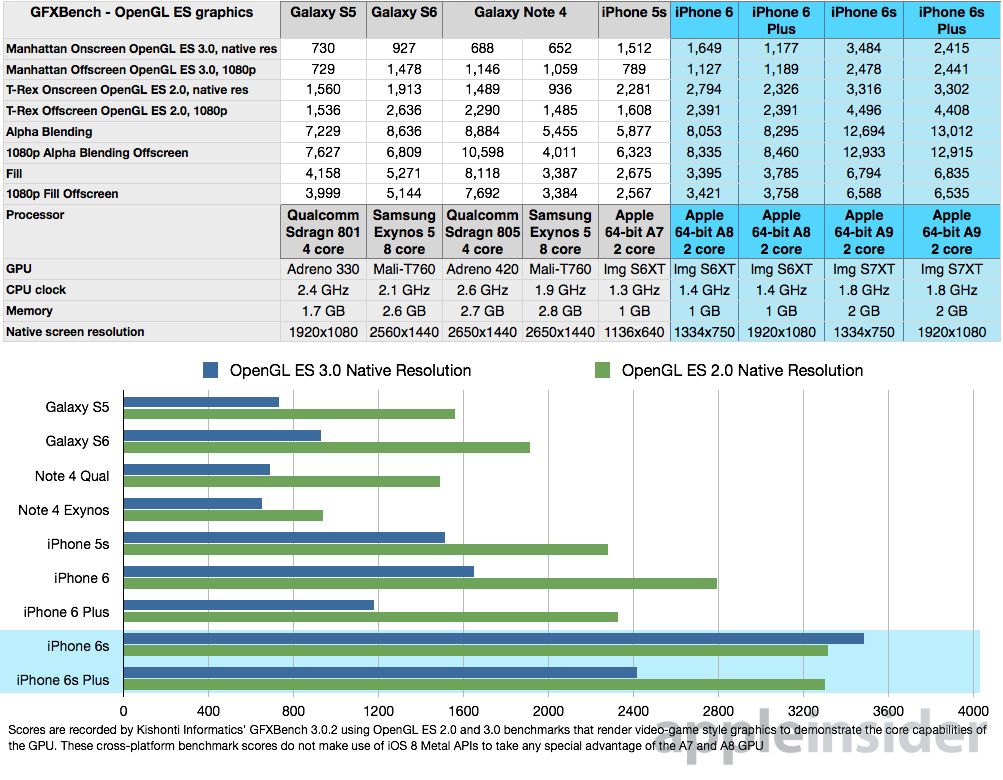
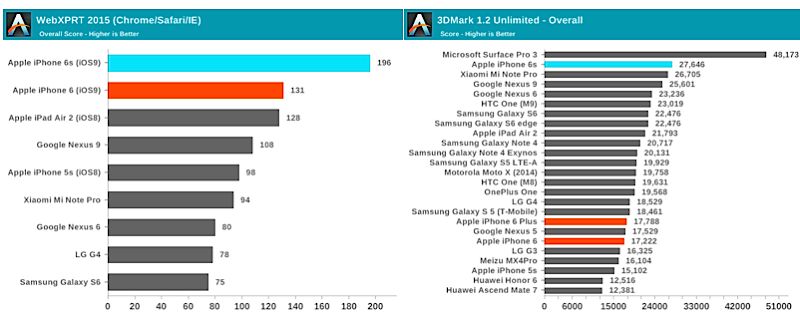
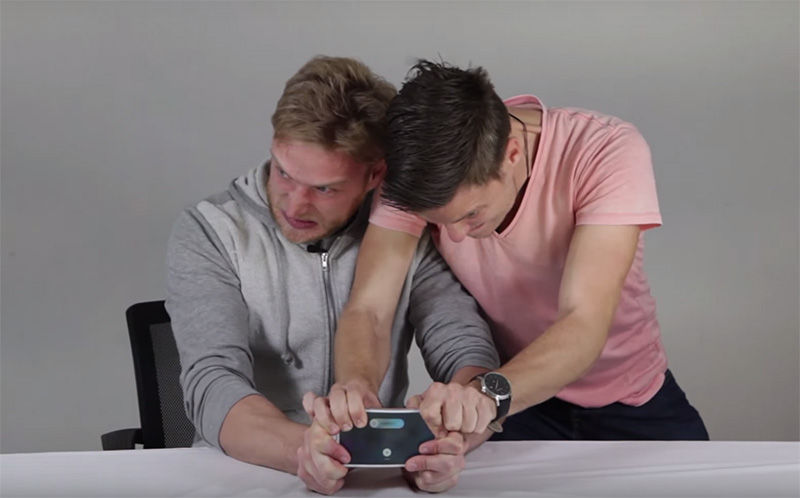
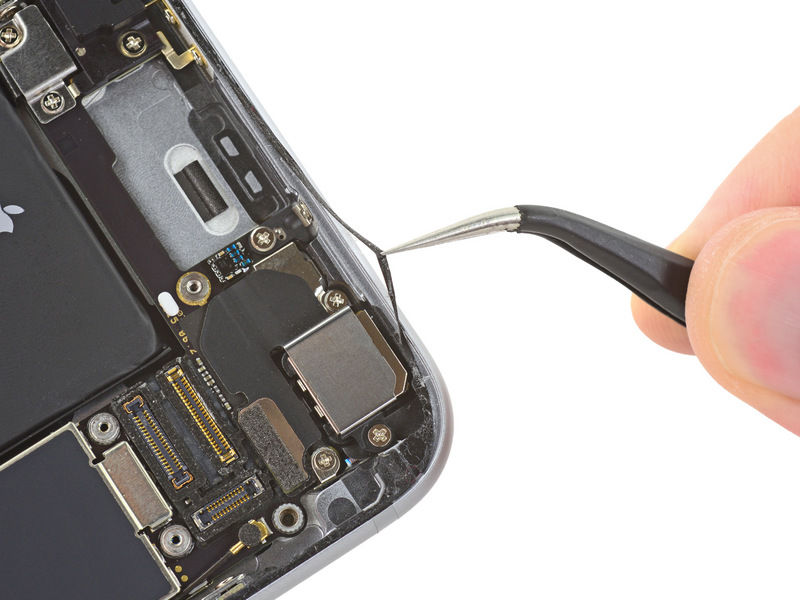
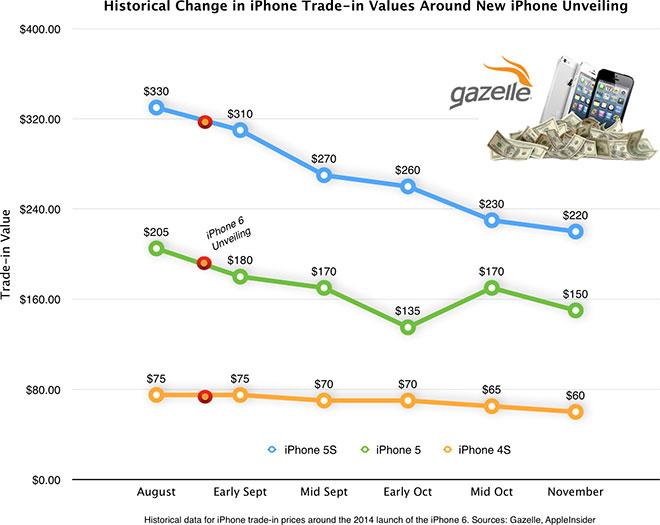












 Mike Wuerthele
Mike Wuerthele

 Malcolm Owen
Malcolm Owen
 Chip Loder
Chip Loder

 William Gallagher
William Gallagher
 Christine McKee
Christine McKee
 Michael Stroup
Michael Stroup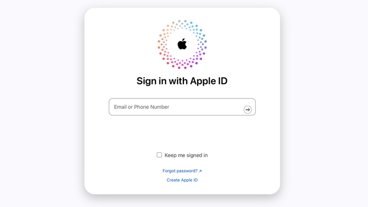







25 Comments
DED, can you explain why you wrote this review? It's late and covers the same material as all the other reviews out there. The reason I ask is that AI writers have complained elsewhere that AI can't afford to exist if people use ad blockers. It seems to me that a lot of your content is not very informative- stuff recycled from other sites, stuff from Apple's tips&tricks app, late reviews, etc. I can only imagine you write this stuff in order to give the impression your site has daily new content so people keep coming back to see your ads. Why don't you instead focus yourselves on the content that only you can create? You have the odd editorial that is good, and the odd bit of insider info. Your site wouldn't be updated every day, but it would be way better in quality. You wouldn't be able to employ as many people with less ad revenue, but you wouldn't need people churning out same old same old all day either. Fix your business model.
"Both phones are also [B]2mm[/B] thicker than last year, a difference of 1/100th of an inch." It's .2mm thicker. I like the article. Thanks
Anyone experience, and if so, have a solution to the problem I am having with 3D Touch? About a third of the time, my applying pressure on the screen activates App wiggliness (the one that enables us to delete, move, etc). :\
[quote name="anantksundaram" url="/t/188610/in-depth-review-apples-iphone-6s-6s-plus-with-3d-touch#post_2784626"]Anyone experience, and if so, have a solution to the problem I am having with 3D Touch? About a third of the time, my applying pressure on the screen activates App wiggliness (the one that enables us to delete, move, etc). :\[/quote] It sounds like you're not pressing firmly enough. This is very 2 of force touch (emphasis on force), not a long press
Anyone experience, and if so, have a solution to the problem I am having with 3D Touch? About a third of the time, my applying pressure on the screen activates App wiggliness (the one that enables us to delete, move, etc).
Press harder, faster.
Or, adjust the sensitivity from settings.